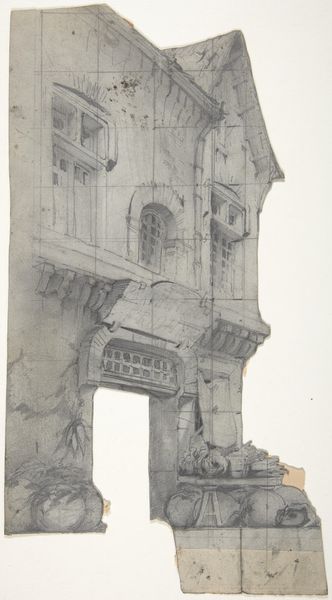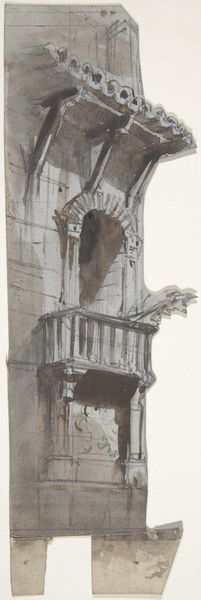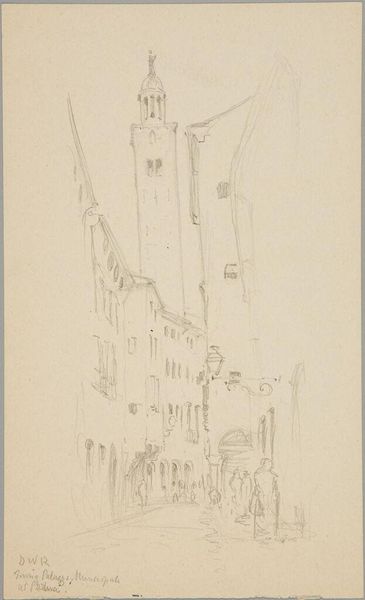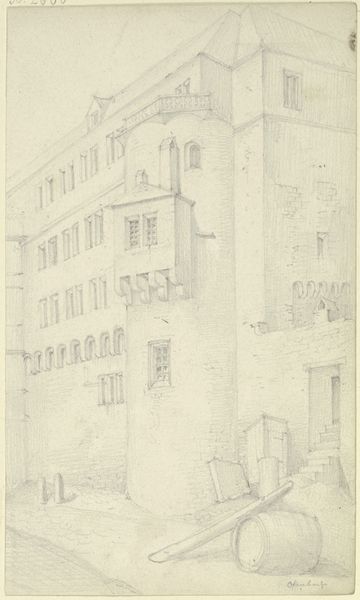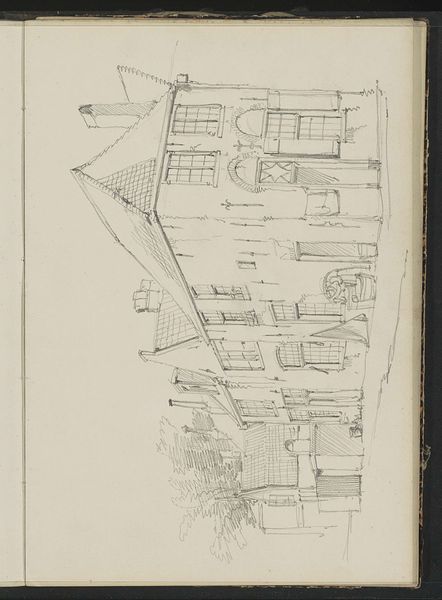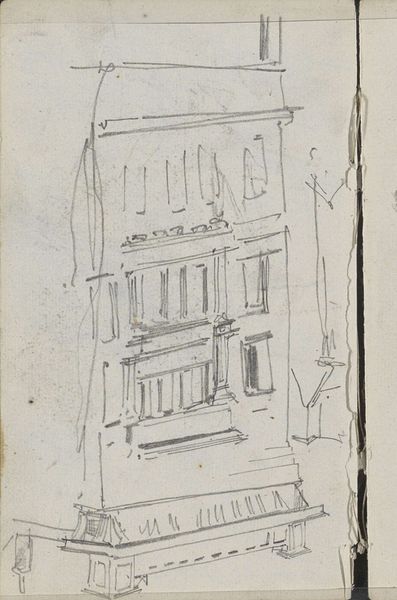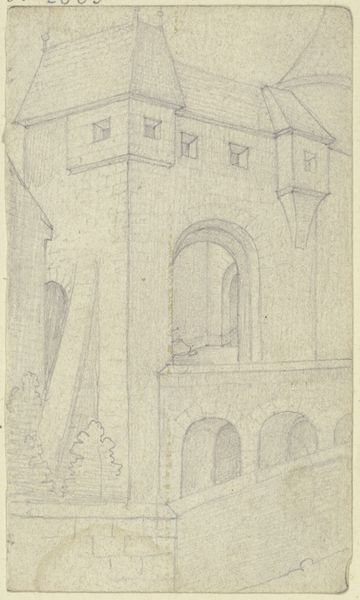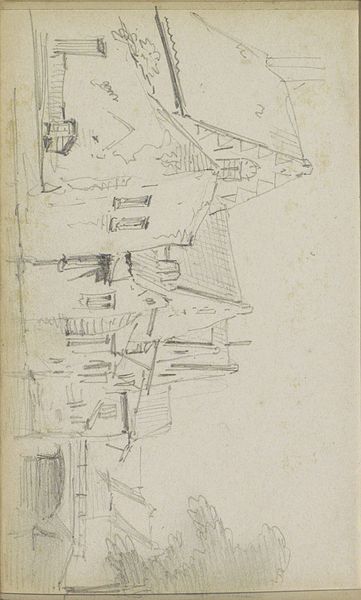
Design for a Stage Set at the Opéra, Paris 1840 - 1890
0:00
0:00
Dimensions: Irregular sheet: 10 1/16 x 2 5/8 in. (25.5 x 6.6 cm)
Copyright: Public Domain
Curator: This delicate rendering in pencil and print by Eugène Cicéri offers us a peek into the world of 19th-century Parisian stage design. It’s titled "Design for a Stage Set at the Opéra, Paris," and dates from about 1840 to 1890. Editor: My first thought is about its fragility. The tones are so muted; you can almost feel the texture of the paper. It's quite an understated piece, considering it’s intended for the bombast of the opera. Curator: Right. What’s fascinating here is how Cicéri's design, though small in scale, hints at the grandeur the opera sought to project, both theatrically and architecturally. Stage design, then and now, played a huge part in constructing social spectacle, solidifying cultural values for its audiences. Editor: Absolutely. You know, looking closer, I’m drawn to the pencil work. It isn't just about representation; it’s about building an atmosphere with simple materials. I mean, it's practically an instruction manual for crafting illusions out of canvas, wood, and light. Think about the workshop where something like this would have been brought to life, the materiality and process of stagecraft at play in constructing ephemeral experiences. Curator: I agree. And beyond its practical function, this piece highlights how opera, as an institution, mirrored and shaped the urban experience. Cityscapes were regularly backdrops and historical allegories were used to teach subtle morals. The Opera was a public and political stage itself. Editor: I also think there's something revolutionary in turning something monumental into something handheld and portable. It underscores the economic element too; here's a design meant for reproduction and distribution amongst the theatrical artisans, for building and re-building this scene for consumption. Curator: It also hints at how art was disseminated and consumed by a wider audience via the printing press; an attempt at cultural democratization, though the opera at that time was, indeed, very selective. Editor: I hadn't considered it that way, that tension between reproducibility and the selective world of opera is thought-provoking. Curator: Exactly. Ultimately, it speaks to the dynamic role of institutions in shaping artistic and social life during a period of great change. Editor: For me, it underscores the beauty and innovation in traditional craft— how from humble materials and practiced labor one could construct such breathtaking illusion and even manipulate perceptions. It makes you consider, what did the consumption of such scenes mean for society?
Comments
No comments
Be the first to comment and join the conversation on the ultimate creative platform.





